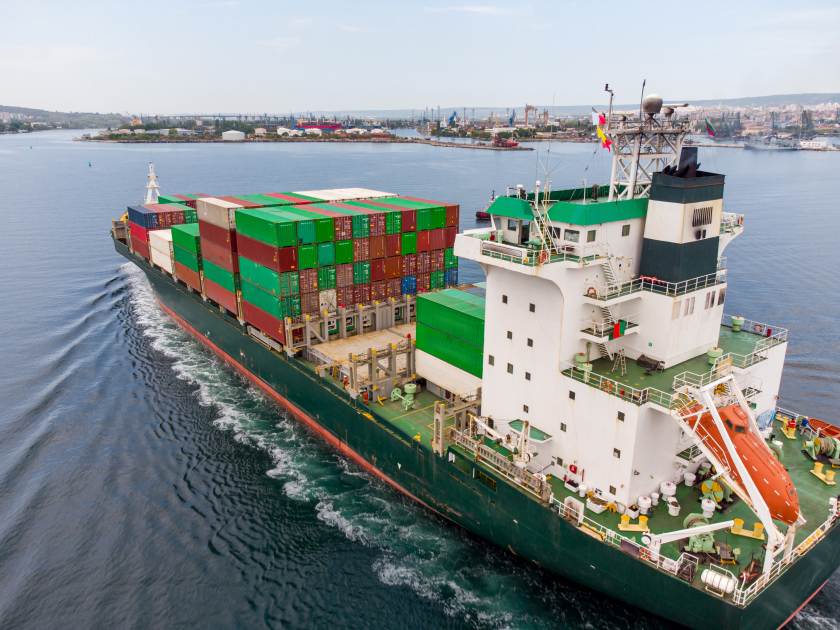Reputation is the most important asset in the business world. It’s hard to build up and incredibly easy to tear down.
Your supply chain is directly responsible for your business’s ability to keep a promise.
When customers make an order, they expect the product to be at their doorstep by X date. You can’t make a promise if your supply chain is unreliable. If your raw materials don’t reach production by the end of the deadline, production halts, and your sales team cannot make sales on late products or arrive unreliably.
This is the main reason so many enterprises outsource their supply chain management – there are too many moving factors. That is unless you decide to use the right SaaS software to make your logistics simpler and more dependable.
Here are a few tips to help you reach supply chain excellence.
1. Real-time tracking and visibility
Real-time tracking allows you to monitor your shipments at every step. From the moment the package leaves the warehouse to its arrival at the customer’s door, you have complete visibility. This helps reduce uncertainty and improves overall customer satisfaction.
With real-time tracking, you can give customers more accurate delivery estimates. Instead of vague windows, you can say exactly when the order will arrive. Also, if there’s a delay, you’ll know immediately and can update the customer to keep their expectations in check.
Tracking doesn’t just help with customer updates – it also helps you spot inefficiencies in your transportation routes. Maybe a certain route is consistently slower than others, or maybe one driver takes longer than expected. By catching these issues, you can make improvements to your logistics process.
You can also use tracking to keep an eye on your suppliers. If a shipment of raw materials is consistently late, you need to address that. Real-time tracking helps you hold your suppliers accountable and ensures that your production lines aren’t halted because of someone else’s delays.
Things don’t always go as planned. However, using real-time tracking allows you to respond to any delays or issues quickly. Whether it’s a traffic jam, a weather problem, or a mechanical breakdown, you’ll know about it immediately and can take steps to resolve the situation.
2. Equipment management system
Trucks are the first thing that comes to mind when people think about logistics. However, the logistics equipment involved goes far beyond just the vehicles on the road. You also have to keep track of the smaller equipment. Forklifts, conveyor belts, and pallet jacks are crucial, too. You need a good equipment management system to keep track of all this.
It’s easy to focus on the big stuff, but small equipment like forklifts plays a vital role in logistics. If you ignore these, your whole operation will slow down. Moreover, managing these pieces can reduce costs and boost efficiency, leading to smoother day-to-day logistics.
A lot of this smaller equipment is used to maintain the big vehicles in your fleet. For example, forklifts and lifts are often used for loading and unloading heavy parts. This equipment is also essential to keeping your trucks, vans, and other vehicles in top shape, ensuring fewer breakdowns.
When you log the use and maintenance of every piece of equipment, you create a sense of accountability. It’s not just about keeping things running; it’s about knowing who used what and when. Moreover, this helps you catch inefficiencies and ensure everything is running like clockwork.
Tracking the smaller equipment also helps with expense management. If you aren’t monitoring maintenance costs, you could be losing money without realizing it. You can pinpoint where money is slipping through the cracks by monitoring how often each piece is used and serviced.
Want to boost efficiency and make your operations seamless?
Contact Growth Hackers
3. Warehouse automation tools
Automation isn’t just about robotics and conveyor belts. Smart shelving systems can optimize your warehouse space, ensuring that every inch is used efficiently. This also makes finding and retrieving items easier, saving time and reducing the risk of lost inventory.
Inventory management can be a hassle, but automation makes it easier. You can set up automatic restocking systems that monitor inventory levels and place orders when stock gets low. This ensures you’re never caught off guard with an empty warehouse, keeping your supply chain moving smoothly.
Automation tools can also connect your warehouse directly with your suppliers. This instigation allows for better communication and more accurate inventory levels, which reduces the chance of errors. This seamless connection also helps streamline your entire logistics process from start to finish.
One of the biggest bottlenecks in a warehouse is picking and packing. Automation tools can significantly speed up this process. Robots can assist workers with heavy lifting, while AI systems can streamline order-picking. This results in faster fulfillment and happier customers, which is a basis for a much better PR.
When humans are involved, there’s always a risk of error. However, warehouse automation tools reduce the risk. From inventory management to order fulfillment, automated systems can help eliminate mistakes. This leads to fewer returned orders and better customer satisfaction overall.
4. Demand forecasting and planning
Demand forecasting starts with historical data. Analyzing past sales and demand can help predict future trends more accurately. This lets you stay ahead of demand spikes and ensures you have enough inventory to meet customer needs without overstocking.
Every business has busy seasons, and demand forecasting helps you prepare for these fluctuations. By predicting when demand will spike, you can ramp up production and adjust your logistics accordingly. This prevents stockouts during busy times and keeps your supply chain running smoothly.
This is also incredibly important for businesses that manage to achieve a 100% sell-through, as their supply depletion is much quicker.
A fine balance between supply and demand is key to a healthy business. Demand forecasting helps you avoid overstocking and understocking. By aligning your production and logistics to predicted demand, you can minimize wasted resources and ensure you have just the right amount of inventory.
Your supply chain doesn’t work in isolation. It must align with your production schedules to ensure smooth operation. Demand forecasting helps you sync production with your supply chain, ensuring that raw materials arrive just in time to meet production demands.
You can collaborate more effectively with your suppliers when you have a clear idea of future demand. This makes it easier to adjust orders, set realistic expectations, and ensure everyone is on the same page. It also helps build stronger relationships with key partners.
5. Supplier relationship management
When you centralize your communication with suppliers, the whole process is simplified. You’ll have everything in one place instead of juggling multiple email threads or phone calls. This makes it easier to track conversations, follow up on orders, and address issues as they arise.
Tracking supplier performance isn’t just about holding them accountable. It’s about making sure your supply chain runs smoothly. By consistently measuring things like delivery times, quality, and reliability, you can spot problems early. Moreover, this gives you the data to make informed decisions about your partnerships.
Managing contracts manually can be a headache, but automation tools simplify it. You can set up reminders for contract renewals and even automate some of the negotiation processes. Also, this helps avoid missed deadlines or unfavorable terms, keeping your supplier relationships running smoothly.
Good supplier relationships aren’t just transactional – they’re collaborative. You can create a more efficient supply chain by working with your suppliers on inventory and supply plans. This collaboration helps both parties manage stock levels and avoid any last-minute surprises that could disrupt your operations.
Keeping track of all your supplier agreements can be overwhelming, but software can make it easier. Automated systems can monitor compliance, ensuring both parties adhere to the terms. This ensures that everything from delivery times to payment schedules is followed, reducing the risk of disputes.
Streamline your operations and grow your business now!
6. Transportation optimization
Shipping costs can eat into your margins, but optimizing your routes can help. You can find the most cost-effective options by analyzing different routes and carriers without sacrificing delivery times. Road haulage is a serious challenge that needs to be handled carefully. Moreover, this can lead to significant savings over time while still maintaining high service levels.
Not every shipment needs to be rushed. By balancing speed with cost efficiency, you can save money without disappointing customers. For instance, some customers may prefer slower, cheaper shipping options, while others need their products as soon as possible. Offering both lets you cater to different needs.
Relying on a single carrier can be risky. Instead, integrating multiple carriers into your logistics system gives you more flexibility. If one carrier is delayed or unavailable, you have backup options ready to go. This improves reliability and helps avoid bottlenecks in your supply chain.
More and more businesses are looking to reduce their environmental impact. By optimizing your shipping routes, you can reduce fuel consumption and lower your carbon footprint. Also, customers are starting to appreciate sustainable practices, which can enhance your company’s reputation.
A supply chain is the backbone of a successful business
Achieving supply chain excellence isn’t just about moving products – reliability, efficiency, and smart management. SaaS platforms provide the tools needed to stay on top of every aspect, from optimizing transportation routes to automating inventory restocking. With the right combination of platforms, you can ensure that your supply chain is always up to the task.
Growth Hackers is a state-of-the-art SaaS marketing agency helping businesses from all over the world grow. There is no fluff with Growth Hackers. We help entrepreneurs and business owners transform their logistic operations with powerful SaaS software, increase their productivity, generate qualified leads, optimize their conversion rate, gather and analyze data analytics, acquire and retain users and increase sales. We go further than brand awareness and exposure. We make sure that the strategies we implement move the needle so your business grow, strive and succeed. If you too want your business to reach new heights, contact Growth Hackers today so we can discuss about your brand and create a custom growth plan for you. You’re just one click away to skyrocket your business.






